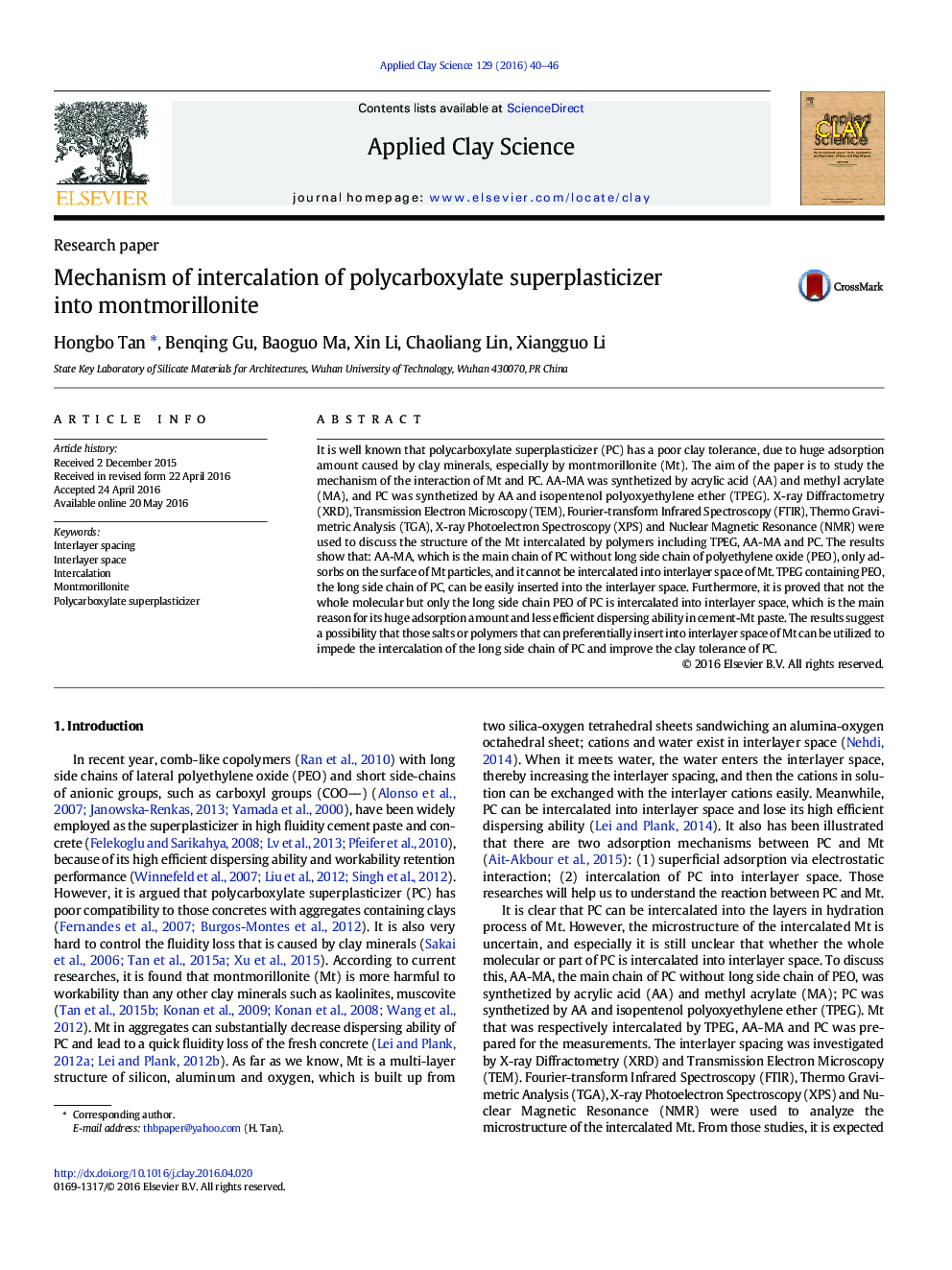| Article ID | Journal | Published Year | Pages | File Type |
|---|---|---|---|---|
| 1694021 | Applied Clay Science | 2016 | 7 Pages |
•Not whole molecular but only long side chains of PC can be intercalated into interlayer space of Mt.•The main chain of PC cannot be intercalated into interlayer space of Mt.•The long side chain of PEO cannot react with AlO and SiO layer structure.
It is well known that polycarboxylate superplasticizer (PC) has a poor clay tolerance, due to huge adsorption amount caused by clay minerals, especially by montmorillonite (Mt). The aim of the paper is to study the mechanism of the interaction of Mt and PC. AA-MA was synthetized by acrylic acid (AA) and methyl acrylate (MA), and PC was synthetized by AA and isopentenol polyoxyethylene ether (TPEG). X-ray Diffractometry (XRD), Transmission Electron Microscopy (TEM), Fourier-transform Infrared Spectroscopy (FTIR), Thermo Gravimetric Analysis (TGA), X-ray Photoelectron Spectroscopy (XPS) and Nuclear Magnetic Resonance (NMR) were used to discuss the structure of the Mt intercalated by polymers including TPEG, AA-MA and PC. The results show that: AA-MA, which is the main chain of PC without long side chain of polyethylene oxide (PEO), only adsorbs on the surface of Mt particles, and it cannot be intercalated into interlayer space of Mt. TPEG containing PEO, the long side chain of PC, can be easily inserted into the interlayer space. Furthermore, it is proved that not the whole molecular but only the long side chain PEO of PC is intercalated into interlayer space, which is the main reason for its huge adsorption amount and less efficient dispersing ability in cement-Mt paste. The results suggest a possibility that those salts or polymers that can preferentially insert into interlayer space of Mt can be utilized to impede the intercalation of the long side chain of PC and improve the clay tolerance of PC.
